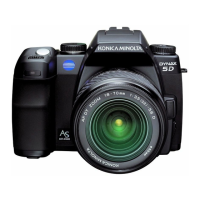
Do you have a question about the Konica Minolta DYNAX 5D and is the answer not in the manual?
| Brand | Konica Minolta |
|---|---|
| Model | DYNAX 5D |
| Category | Digital Camera |
| Language | English |
Warnings and cautions for using lithium-ion batteries safely.
Identification of the camera's external components and their functions.
Explanation of the icons and information displayed in the camera's viewfinder.
Instructions for mounting and dismounting camera lenses.
Steps for securely attaching the camera strap to the camera body.
How to adjust the viewfinder's diopter for clear vision.
Procedure for charging the camera's lithium-ion battery using the supplied charger.
Steps for inserting and removing the camera's battery.
How to power the camera on and off, and initial setup.
Information about using an AC adapter for continuous power.
Understanding the battery level indicator on the camera's monitor.
How the camera conserves battery by automatically shutting down.
Instructions for inserting and removing memory cards for image storage.
Procedure to set the camera's internal clock and calendar for accurate image recording.
Guidance on how to hold the camera properly for stable shooting.
Explanation of the indicators shown on the monitor during recording.
Step-by-step guide for taking a photograph using basic camera functions.
Interpreting the autofocus status indicators in the viewfinder.
Tips for focusing in challenging lighting or subject conditions.
How to lock focus on a subject for recomposition.
Understanding the indicator for camera shake and how to mitigate it.
Instructions for deploying and using the camera's integrated flash unit.
How the Anti-Shake system reduces blur from camera movement.
Controls for cycling through different monitor display modes.
How to review captured images on the camera's monitor.
Visual representation of tonal distribution within an image.
Options for rotating images for better viewing or presentation.
Magnifying images on the monitor for closer examination.
How to remove unwanted images from the memory card.
Customizing the information shown during image playback.
Selecting different shooting modes like Auto, Program, Aperture, and Shutter priority.
Using pre-set modes optimized for specific scenes like Portrait or Landscape.
Fully automatic exposure control mode that resets functions to defaults.
Program exposure mode that balances shutter speed and aperture.
Mode where the user sets aperture; camera sets shutter speed.
Mode where the user sets shutter speed; camera sets aperture.
Mode for full manual control over shutter speed and aperture.
How to use the Bulb mode for long exposures.
Locking exposure settings to maintain consistency.
Using flash with slower shutter speeds for balanced ambient light.
Focusing using a specific point on the subject.
Adjusting exposure to make images brighter or darker.
Previewing the depth of field before taking a shot.
Switching between autofocus and manual focus modes.
Selecting shooting rates like single-frame or continuous advance.
Taking multiple shots with varying exposure settings.
Capturing images with different white balance settings.
Adjusting ISO sensitivity and using Zone Matching for exposure control.
Customizing the function button for quick access to settings.
Selecting autofocus modes like single-shot, continuous, or automatic.
Choosing how the camera measures light for exposure.
Adjusting the flash output level relative to ambient light.
Selecting color styles and spaces like Natural or Adobe RGB.
Adjusting contrast, saturation, and sharpness of images.
Setting the camera's color balance to match different lighting conditions.
Calibrating the camera's white balance to a specific light source.
Setting white balance based on color temperature or magenta/green shift.
Understanding how different light sources affect image color.
Explanation of Exposure Value (EV) and its relation to light measurement.
How to open and navigate the camera's recording menu options.
Setting the resolution and compression level for image files.
Reviewing captured images for a short period immediately after shooting.
Reducing digital noise in long exposure images.
Selecting flash operation modes like fill-flash or red-eye reduction.
Controlling external flash units wirelessly.
Managing flash metering and pre-flash settings.
Setting the sequence for exposure or white balance bracketing.
Restoring recording settings to their default values.
How to access and use the playback menu features.
Interface for selecting multiple images for operations like deletion or printing.
Erasing images from the memory card, with options for single, multiple, or all files.
Erasing all data from the memory card, requiring careful use.
Selecting specific folders to view or edit images in playback mode.
Protecting images from accidental deletion by marking them as locked.
Customizing the display of multiple images in thumbnail or file browser formats.
Automatically displaying captured images in a sequence.
Ordering standard prints from digital images for compatible printers.
Information about the Digital Print Order Format standard.
Adding the capture date to images for printing.
Creating a contact sheet of all images in a folder.
Deleting DPOF print orders from the memory card.
Setting whether focus or shutter release takes priority.
Configuring the function of a lens' focus-hold button.
Customizing the operation of the AE Lock button.
Assigning functions to the camera's control dials.
Adjusting how exposure compensation affects ambient and flash exposure.
Turning the AF assist beam on or off.
Preventing shutter release when no memory card is inserted.
Protecting the CCD from dust when no lens is mounted.
Configuring the duration of AF area illumination.
Managing automatic monitor turn-off using viewfinder sensors.
Setting automatic rotation or fixed orientation for the recording display.
Configuring automatic rotation or fixed orientation for playback display.
Adjusting the brightness level of the camera's LCD monitor.
Selecting the mode for data transfer (computer or PictBridge printer).
Choosing between NTSC and PAL video output standards.
Connecting the camera to a TV to view images.
Enabling or disabling audio confirmations for camera operations.
Selecting the menu language displayed on the camera.
Setting the camera's internal clock and calendar.
Managing file numbering across folders and memory cards.
Setting the format for folder names on the memory card.
Creating new folders on the memory card for image organization.
Setting the duration for the LCD monitor backlight.
Configuring the auto-shutdown timer to conserve battery.
Choosing the destination folder for newly recorded images.
Remembering the last accessed menu section.
Setting whether confirmation is required before deleting images.
Instructions for cleaning the camera's image sensor.
Resetting all camera settings to their factory defaults.
Preventing stray light from affecting the viewfinder.
Using magnifiers and angle finders for the viewfinder.
Connecting a remote cord for vibration-free shooting.
Mounting external flash units to the camera's accessory shoe.
Connecting studio or location flash systems via a PC cord.
Information about the AC power cord for the battery charger.
Using high-speed sync for flash with fast shutter speeds.
Computer system requirements for connecting the camera.
Steps to establish a connection between the camera and a PC.
Installing the necessary USB driver for older Windows versions.
Manually installing drivers via the Add New Hardware wizard.
Managing power saving during data transfer to prevent shutdowns.
How image files and folders are structured on the memory card.
Safely removing the camera from the computer to prevent data loss.
Procedures for changing memory cards while connected to a computer.
Uninstalling camera drivers from a Windows system.
Troubleshooting common printing issues and error messages.
How to use the camera's menu for direct printing via PictBridge.
Selecting the desired paper size for printing.
Choosing print layouts, including borderless printing.
Setting the print quality for images.
Options for printing image metadata like date and file name.
Printing images selected via DPOF orders.
General advice on maintaining the camera's condition.
Procedures for cleaning the camera body, lens, and CCD.
Guidelines for storing the camera and accessories properly.
Recommended environmental conditions for camera operation.
Best practices for handling and maintaining memory cards.
Information on battery care, charging, and performance.
Tips for maintaining and cleaning the camera's LCD screen.
Legal information regarding image copyright and usage.
Preparations and checks before significant use or travel.
How to get help or service for the camera.
Environmental disposal information for electronic equipment in EU countries.

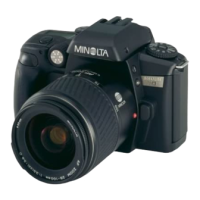
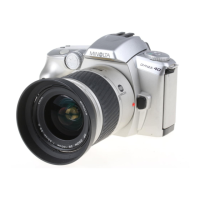
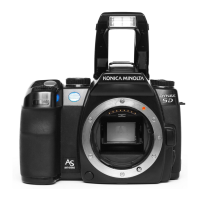
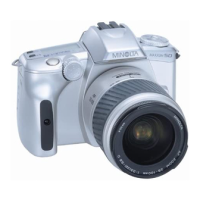

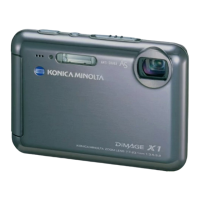
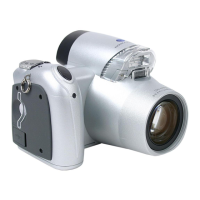


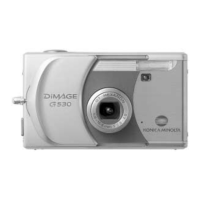

